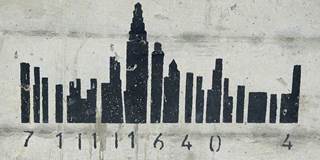The data revolution offers enormous potential for improving decision-making at every level of development policy. But gathering data is not enough; the information must also be managed and evaluated – and doing this properly can be far more complicated than the effort to collect it.
NAIROBI – Rapid advances in technology have dramatically lowered the cost of gathering data. Sensors in space, the sky, the lab, and the field, along with newfound opportunities for crowdsourcing and widespread adoption of the Internet and mobile telephones, are making large amounts of information available to those for whom it was previously out of reach. A small-scale farmer in rural Africa, for example, can now access weather forecasts and market prices at the tap of a screen.
This data revolution offers enormous potential for improving decision-making at every level – from the local farmer to world-spanning development organizations. But gathering data is not enough. The information must also be managed and evaluated – and doing this properly can be far more complicated and expensive than the effort to collect it. If the decisions to be improved are not first properly identified and analyzed, there is a high risk that much of the collection effort could be wasted or misdirected.
This conclusion is itself based on empirical analysis. The evidence is weak, for example, that monitoring initiatives in agriculture or environmental management have had a positive impact. Quantitative analysis of decisions across many domains, including environmental policy, business investments, and cyber security, has shown that people tend to overestimate the amount of data needed to make a good decision or misunderstand what type of data are needed.

NAIROBI – Rapid advances in technology have dramatically lowered the cost of gathering data. Sensors in space, the sky, the lab, and the field, along with newfound opportunities for crowdsourcing and widespread adoption of the Internet and mobile telephones, are making large amounts of information available to those for whom it was previously out of reach. A small-scale farmer in rural Africa, for example, can now access weather forecasts and market prices at the tap of a screen.
This data revolution offers enormous potential for improving decision-making at every level – from the local farmer to world-spanning development organizations. But gathering data is not enough. The information must also be managed and evaluated – and doing this properly can be far more complicated and expensive than the effort to collect it. If the decisions to be improved are not first properly identified and analyzed, there is a high risk that much of the collection effort could be wasted or misdirected.
This conclusion is itself based on empirical analysis. The evidence is weak, for example, that monitoring initiatives in agriculture or environmental management have had a positive impact. Quantitative analysis of decisions across many domains, including environmental policy, business investments, and cyber security, has shown that people tend to overestimate the amount of data needed to make a good decision or misunderstand what type of data are needed.